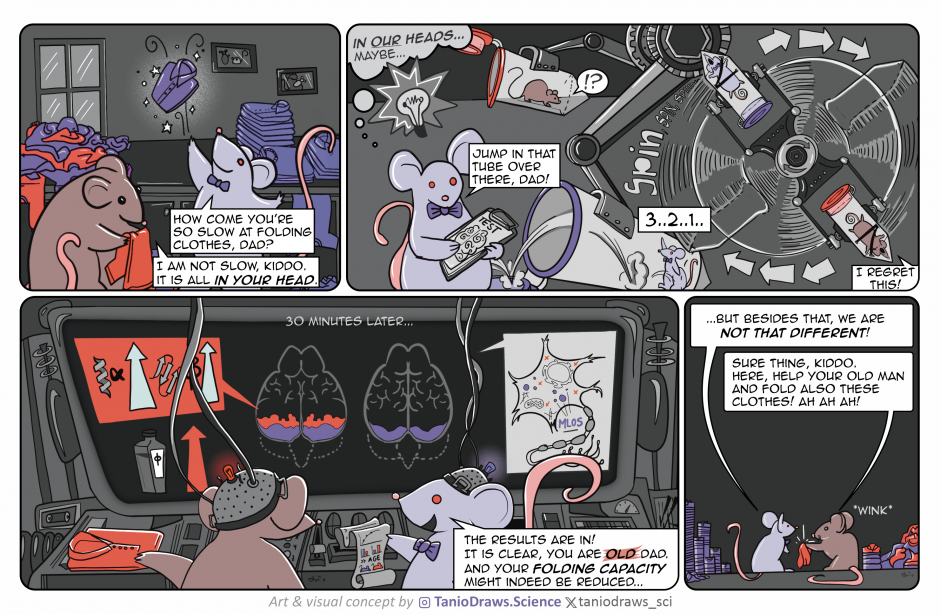
Illustrated by: Dr. Gaetano Calabrese
Authors: Dr. Cristen Molzahn, Dr. Erich R Kuechler, Dr. Irina Zemlyankina, Dr. Lorenz Nierves, Dr. Tahir Ali, Dr. Grace Cole, Dr. Jing Wang, Dr. Razvan F Albu, Dr. Mang Zhu, Dr. Neil R Cashman, Dr. Sagine Gilch, Dr. Aly Karsan, Dr. Philipp F Lange, Dr. Jorg Gsponer, Dr. Thibault Mayor
Title: Shift of the Insoluble Content of the Proteome in the Aging Mouse Brain
Summary: As we get older, our cells may have a harder time dealing with misshapen proteins, which can lead to problems in maintaining the normal balance of proteins in our bodies. In simpler organisms such as C. elegans, a tiny worm, this protein imbalance is linked to proteins clumping together, a process known as protein aggregation. However, it is not fully understood how this process functions in aging mammals.
In this new study by Dr. Mayor’s team, scientists used a high-tech method to examine the composition of proteins in the brains of mice. They discovered a group of 171 proteins, including one called a-crystallin, that tend to clump together more in older mice. To get a better understanding of this mechanism, they also examined data from other studies about proteins involved in aging and neurodegeneration. Surprisingly, this showed that the proteins that clump together in younger mice are typically different from those that do so in older mice.
In younger mice, the proteins that clump together are more likely to be disordered in shape, associated with membraneless structures in cells, and involved in activities related to RNA (a molecule that helps make proteins). However, as mice age, more well-structured proteins tend to form these clumps. This suggests that age-related changes in how proteins are organized in the brain lead to the clumping of proteins with specific characteristics. Importantly, this is not related to proteins involved in forming membraneless cellular structures. The study suggests that specific proteins tend to aggregate in the brains of older mice, and the characteristics of these proteins are different from those in younger mice. This deepens the understanding of protein aggregation changes with age and provides insight into the cellular processes associated with aging.
Read the full article